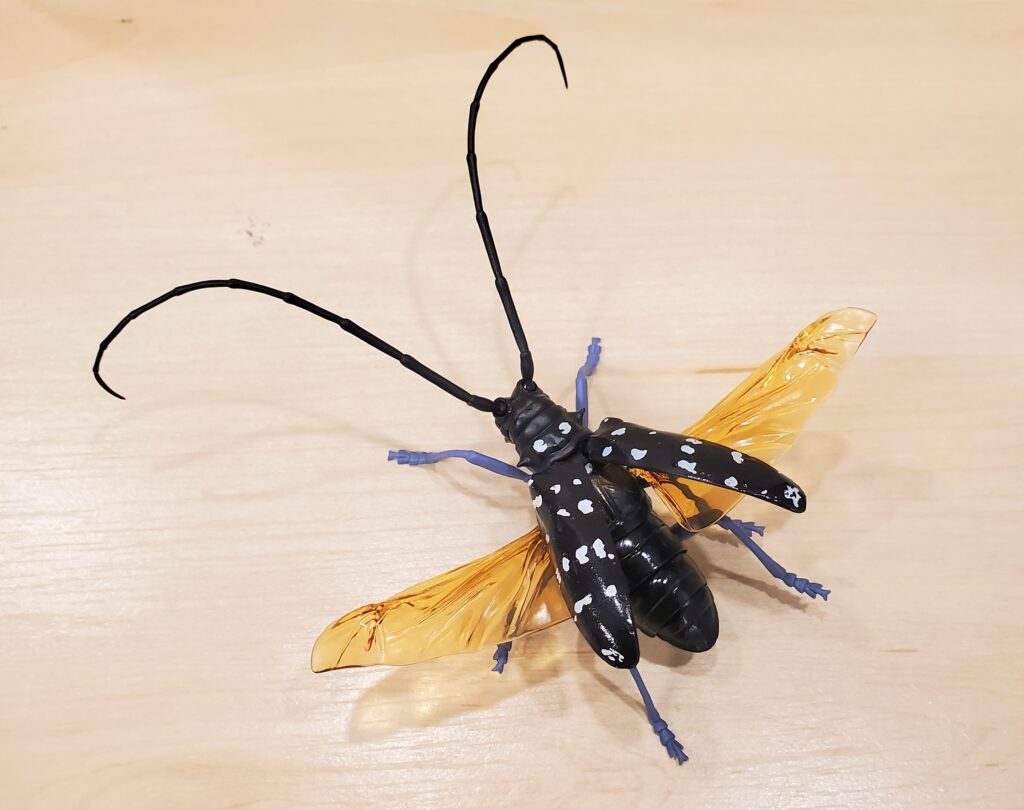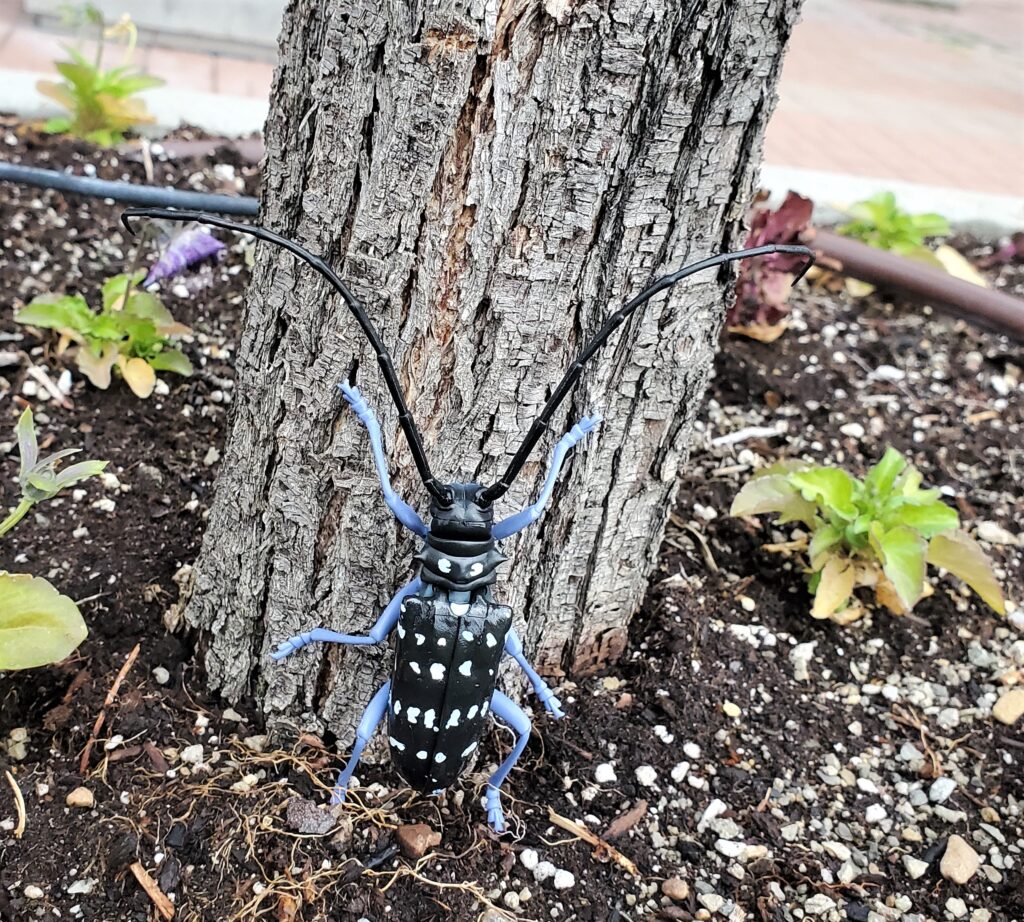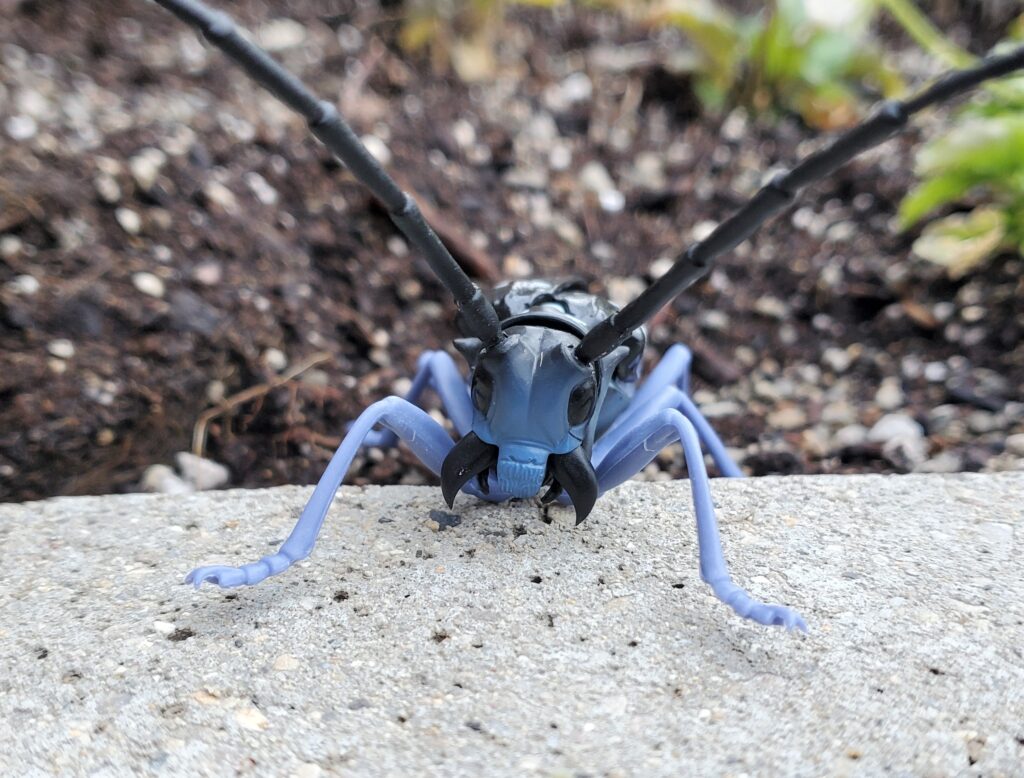The citrus long-horned beetle (Anoplophora chinensis) is a cerambycid beetle native to East Asia. Larvae develop in various hardwoods, and the beetle is considered a pest of several ornamental and commercial food plants, including citrus, pecan, apple, sycamore, willow, pear, mulberry, litchi, kumquat, fig, and many others. The beetle has been introduced to North America and Europe where it has the potential to become a serious pest due to its lack of host specificity. In the USA, it was first detected in 1999 in Georgia on bonsai trees imported from China; however, it never became established. In 2021, it was detected in Washington in a shipment of bonsai maple trees from Korea. It has also been detected in Wisconsin. For now, it appears that none of those introductions led to naturalization in North America. In Europe, it has been detected in Italy, Switzerland, Turkey, France, Germany, and Croatia, having been naturalized in at least Italy. A related species, the Asian long-horned beetle (A. glabripennis) was also introduced to Europe and North America, and while it is established in Europe, North American populations appear to be eradicated, or near-so.

In 2022, Bandai released a figure of A. chinensis in the fourth collection of Stag Beetles (even though A. chinensis is a cerambycid, not a lucanid) in the Diversity of Life on Earth Line. Bandai marketed the figure as A. malaysiaca, which is now considered a synonym of A. chinensis. Previously, this species had been made by Hayakawa Toys (2004) and Re-Ment (2010). I have also seen a composite and wire figure from an unknown Japanese company. At one point or another, I had all four, but now I have only the two from Bandai and Re-Ment.

The figure comes in 12 pieces: 1) head + pronotum, 2) rest of body and elytra, 3) six legs, 4) two antennae, and 5) two hind wings. When assembled, the base of the legs and antennae are articulated, with additional articulations at the head-pronotum junction and at the base of the mandibles. The beetle can be displayed neutral or in-flight with its hind wings exposed. It also comes with a base formed from the gashapon capsule (not shown here) to elevate it off the ground. While the thought of having the first flying cerambycid in my collection is intriguing, I display mine in a neutral pose and off the base.

The final product has a body length of 6.0 cm for a scale of 3:1-1.6:1. The paint job for the body is very well done. The legs are monochrome, but they are an accurate color for this species.

Overall, this is the best representative of this species available. However, if the size, assembly, articulations, and/or cost are an issue, the aforementioned version by Re-Ment is very good and still shows up on eBay periodically.

Disclaimer: links to Ebay and Amazon on the AnimalToyBlog are affiliate links, so we make a small commission if you use them. Thanks for supporting us!




I’ll never get into collecting these awesome arthropod figures (too many hobbies already) but I sure love reading about them.